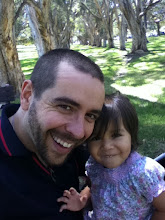The land of fakes
China, as many other Asian countries, has developed to a pace where culture and tendencies have a difficult time to catch up in a few years,both old and new generations have been bombarded with new "ways of living" that have put new demands on everyone as they need to live "on the a top of the wave". Of course,having the most expensive Rolex, the latest Gucci or the newest diesel jeans, comes with a price tag. Impossible to pay, for the many. And that is how this culture of the fake articles have developed. And so much, that today is hard to know what is real and what is not. To the point that, while in an airport in Shanghai or Beijing ,you assume that all business men that you see carrying Victor Inox travel bags, made a previous stop to any of the multiple street markets to get their piece on the fast track of the fashion world. But I always found this issue more amusing than interesting. I have never been myself very hooked into this fake world. My collection of fake treasures after several years in Asia is limited to a couple of watches and quite some DVD. So I always saw this world as a distant one.
But last week, reality stroke me very hard. While in Shanghai, I went with some friends to the new restaurant called Thai Gallery. A mix of museum and art gallery. The ambiance was great. Laying in low sofas surrounded by nice plants and pieces of art representing Thai and Buddhist scenes, I felt like at home. But it was not until we left the place that I realised why this homey feeling: there, hanging on the wall was a copy of a painting created by the Australian (semi Balinese, I must say) artist, Andrew Wellman. There were several paintings simulating scenes that he recreated in his Buddha collection and his Ankor Wat representations. So similar that, at first, I believed they were original. But, after I checked carefully the walls of the spacious restaurant,I noticed with amazement a piece that convinced me that all those paintings were copies. And I'm so certain, because the original is hanging in my apartment.
I could not do other thing rather than stand there a smile. The thin line between real and faked is sometimes amazing. Was this a copy or was mine? Good that I got the painting directly from Andrew over a few glasses of wine. Otherwise, I couldn't be certain.
The only certain thing is that, the fast track of the fake world is a sign that the articles are not affordable for that many people.
©ARLOS 06
But last week, reality stroke me very hard. While in Shanghai, I went with some friends to the new restaurant called Thai Gallery. A mix of museum and art gallery. The ambiance was great. Laying in low sofas surrounded by nice plants and pieces of art representing Thai and Buddhist scenes, I felt like at home. But it was not until we left the place that I realised why this homey feeling: there, hanging on the wall was a copy of a painting created by the Australian (semi Balinese, I must say) artist, Andrew Wellman. There were several paintings simulating scenes that he recreated in his Buddha collection and his Ankor Wat representations. So similar that, at first, I believed they were original. But, after I checked carefully the walls of the spacious restaurant,I noticed with amazement a piece that convinced me that all those paintings were copies. And I'm so certain, because the original is hanging in my apartment.
I could not do other thing rather than stand there a smile. The thin line between real and faked is sometimes amazing. Was this a copy or was mine? Good that I got the painting directly from Andrew over a few glasses of wine. Otherwise, I couldn't be certain.
The only certain thing is that, the fast track of the fake world is a sign that the articles are not affordable for that many people.
©ARLOS 06


0 Comments:
Post a Comment
<< Home